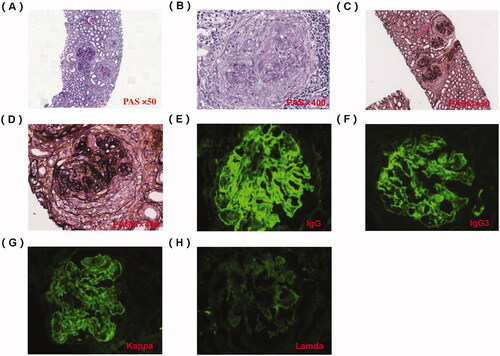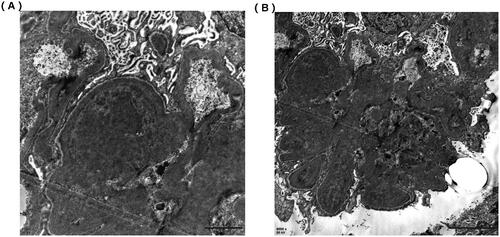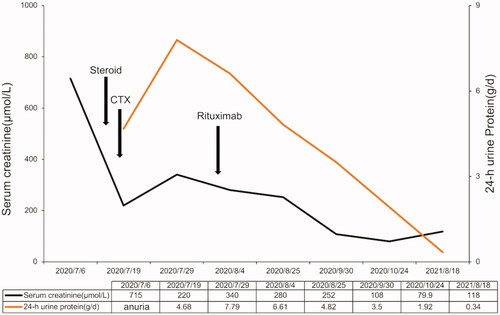Figures & data
Table 1. The patient’s laboratory test results on admission.
Figure 1. Pathology of renal biopsy. (A) Light microscopy (LM) shows cellular crescent, PAS staining × 50. (B) Large cellular crescent formation, PAS staining × 400. (C) LM showed an MPGN pattern and full of crescents, PASM staining × 50. (D) Cellular crescent formation and compressed capillary loops, PASM staining × 400. (E) Immunofluorescence shows granular IgG deposition along the capillary wall and in the mesangial area (×200). (F) Immunofluorescence shows IgG subtype is IgG3. (G) Immunofluorescence shows granular κ light chain deposition along the capillary wall and in the mesangial area (×200). (H) Immunofluorescence shows negativity for lambda light chain (×200).

Figure 2. Electron microscope of renal biopsy specimens. (A) Electron microscope shows the electric-dense deposits in the mesangial area (×12,000). (B) Electron microscope shows the electric-dense deposits in subendothelial areas of glomeruli (×6000).



